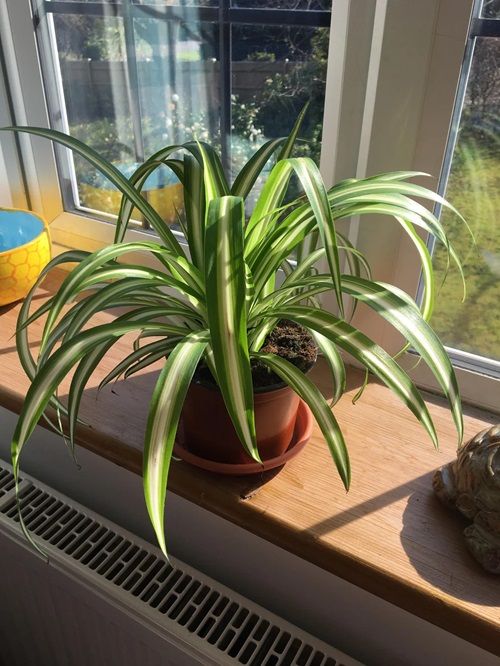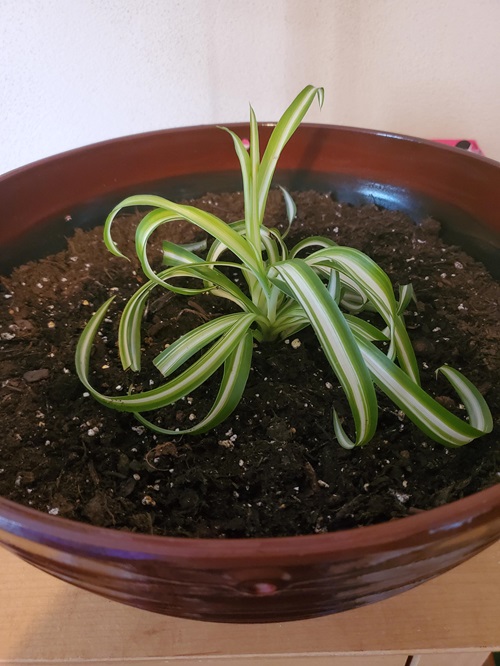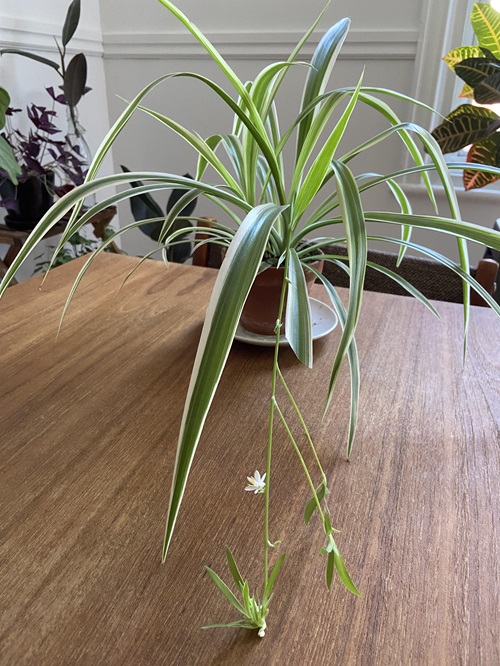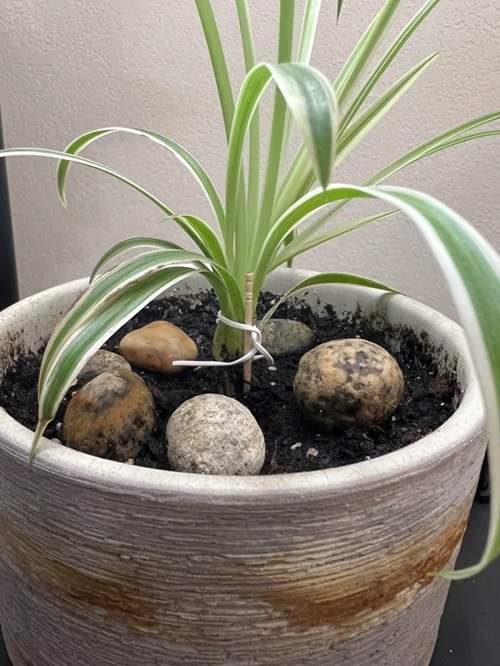Why Won’t Your Spider Plants Produce Babies? Here are some reasons and simple solutions to get more spiderettes.

Call them what you want—pups, plantlets, spiderettes—but this houseplant is incomplete without those spidery offsets dangling off the mother! So, if you’re wondering why your spider plants won’t produce babies, here are the reasons and solutions!
Why Won’t Your Spider Plants Produce Babies?
1. Your Spider Plant is Maybe Too Young

A young spider plant (Chlorophytum comosum) may not be mature enough to produce babies.
It can take 1-2 years before your plant can start putting out pups. During this time, provide ideal conditions and care, and above all, be patient!
2. Pot Too Big

Keep your spider plant slightly rootbound to produce healthy offspring—long, wiry runners emerging from the parent.
If the pot is overly large, the soil will dry out slowly, increasing the chance of root rot. Besides that, your plant will focus more on root growth for a long time.
For abundant spiderettes to form and develop, here are some of the best pots you could choose for your spider plant. You could also re-pot it in a slightly larger container that keeps the mother plant mildly root-bound to stimulate more babies.
3. Not Enough Light for Spiderettes to Appear
Spider plants need sufficient bright, indirect light to grow and produce babies. If your plant is in a dim room or placed too far from a sunny window, it might not get enough energy from light to produce babies.
Move your spider plant to a sunny window with afternoon shade or a spot where it can get ample filtered sunshine. Avoid harsh direct sunlight for the full day, as it can scorch the leaves.
4. Lack of Photoperiod

Spider plants produce long, wiry stems that bear small, white blooms at the end of the stems in response to short days and long, undisturbed nights. After flowering, they produce their small baby plants.
To force blooms on your spider plant, keep it in complete darkness for 12-15 hours and then in 6-9 hours of direct + indirect sunlight combination for three weeks in the fall. In this dark period, even a little light can hinder flowering.
5. Imbalance in Nutrients
Spider plants need a gentle dose of balanced essential nutrients like phosphorous, potassium, and nitrogen during their active growth phase in spring, summer, and early fall.
You can fertilize it every 3-4 weeks in a weak dose with a balanced liquid fertilizer like 10-10-10 or apply a formula with a 2:1:2 NPK ratio to keep the mother plant healthy.
However, if heavily fertilized, your spider plant may not produce babies. Too much feeding could also lead to tip burning and brown leaves. So stick to a mild feed during its growth stage and then ease off!
6. Where’s the Warmth & Humidity?

Spider plants grow best in moderate to warm temperatures and average to high humidity. During the blooming season, the preferred temperature is 60-90 F (15-32 C) and 40-80% humidity.
If the temperature drops below 55 F (12 C) or above 90 F (32 C) regularly during this time, blooms and pups will not form or will be deformed.
7. Medium Not Draining Well

Spider plants grow best in loamy, slightly moist soil with a mildly acidic to neutral pH. They adapt to different types of potting soil as long as it is free-draining. If the medium is cloggy and heavy, blocking proper drainage and airflow, they won’t thrive.
Make sure the soil drains well, indoors or outdoors. You can improve drainage by mixing in one part peat moss or coco coir, one part perlite, and four parts pine bark. This will help keep your plant healthy for a long time.


